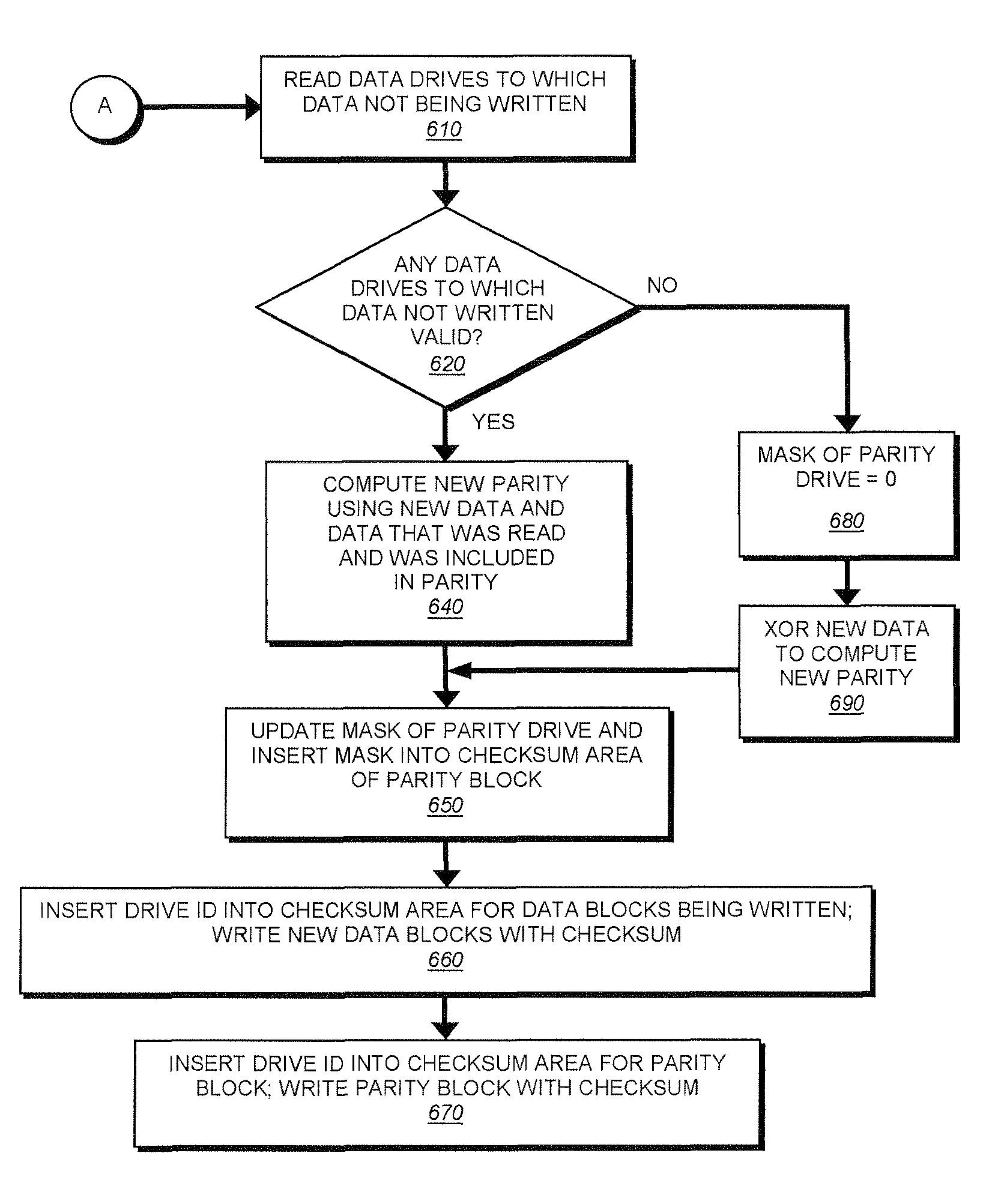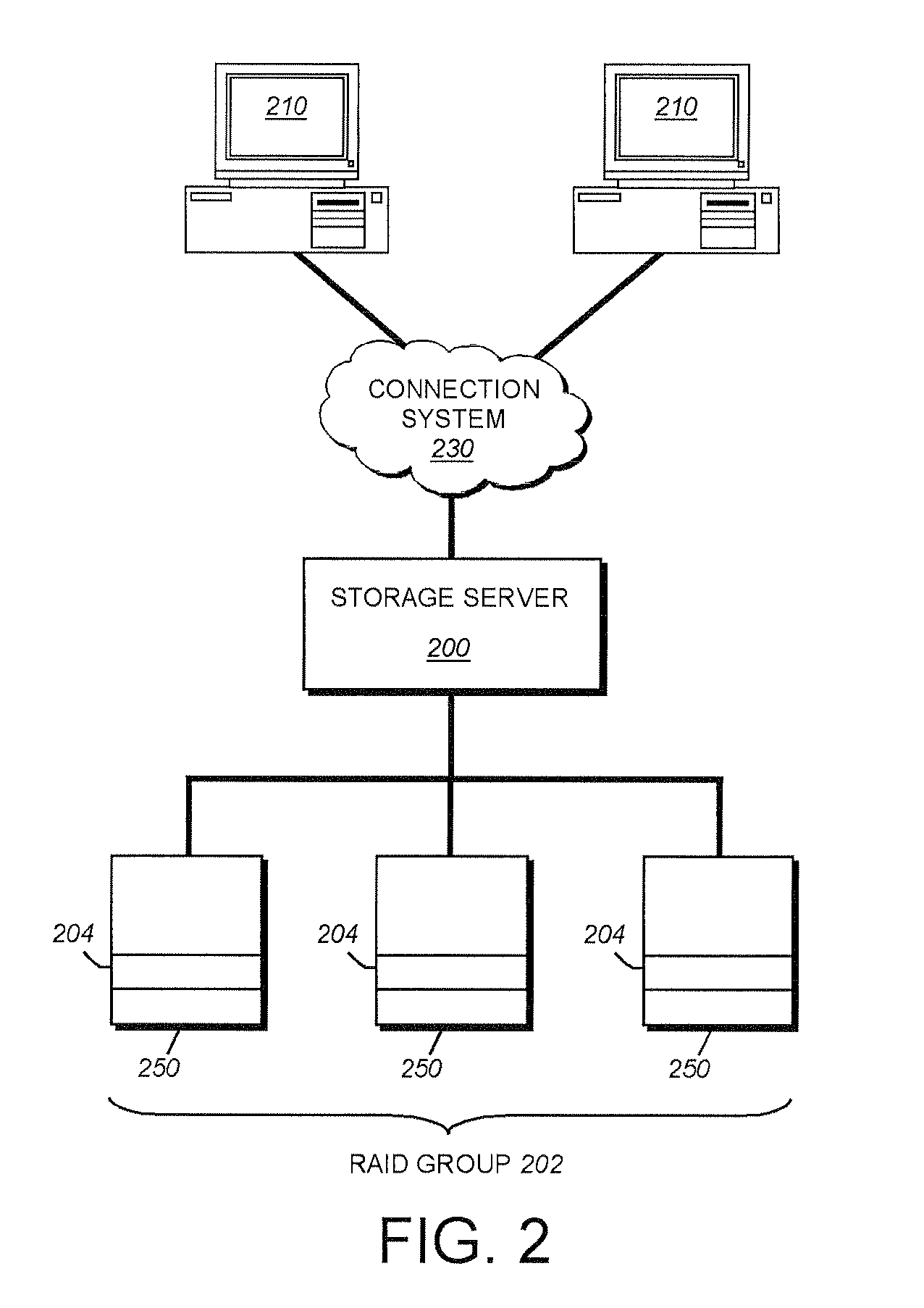System and method for eliminating zeroing of disk drives in RAID arrays
a raid array and disk drive technology, applied in the field of storage systems, can solve the problems of requiring up to eight hours to complete the process of zeroing the disk drive, corrupting or losing data from time to time,
- Summary
- Abstract
- Description
- Claims
- Application Information
AI Technical Summary
Benefits of technology
Problems solved by technology
Method used
Image
Examples
Embodiment Construction
[0032]Embodiments of the present invention provide a method, system, and computer program product for providing an indication whether data stored on a disk drive are invalid. As used herein, “invalid data” are data written prior to the disk drive being added to an array of the disk drives or data in a block which has become free and which has been removed from the corresponding parity block in the stripe. Knowing that the disk drive stores data that were written prior to the drive being used in the existing array or have become invalid allows a storage server to ignore the invalid data and not to use it when computing a parity block (i.e., a data protection value computed as a result of a logical operation on data blocks in a stripe in the array of disk drives). This, in turn, eliminates the need to zero disk drives (by writing a zero value to the disks) or to perform parity re-computation prior to using the disk drives to ensure that the parity is consistent with the data in the co...
PUM
 Login to View More
Login to View More Abstract
Description
Claims
Application Information
 Login to View More
Login to View More - R&D
- Intellectual Property
- Life Sciences
- Materials
- Tech Scout
- Unparalleled Data Quality
- Higher Quality Content
- 60% Fewer Hallucinations
Browse by: Latest US Patents, China's latest patents, Technical Efficacy Thesaurus, Application Domain, Technology Topic, Popular Technical Reports.
© 2025 PatSnap. All rights reserved.Legal|Privacy policy|Modern Slavery Act Transparency Statement|Sitemap|About US| Contact US: help@patsnap.com



